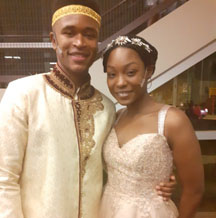
Most of us know the traditional Cinderella story. She was the badly treated step daughter who didn’t get a chance to attend the ball to meet and marry the prince until her fairy godmother stepped in.
Chicago’s Black Ensemble Theater produced its first professional musical version of Cinderella in 1976 and has staged the show about every other year. In its hilarious account, the wicked stepmother works at the post office in the Kingdom of Other. Blues is an important part of the production, which is appropriate since most of the Windy City’s Black citizenry have American roots in the greater Memphis/Mississippi Delta region, home of the Blues.
In addition to twists in the original story, playwright Jackie Taylor conjured several creative subplots. In one of the junior storylines, the solo White character seeks to join the Kingdom but first must pass a test.
One of the test elements is for her to taste and then name three different types of greens. When given the greens, she matter-of-factly responds, “How am I going to eat these greens without any cornbread?” The audience whoops. Without being preachy, Taylor also weaves in subplots dealing with colorism and homophobia.
In the 43 years Taylor has written, produced, and directed the staged performance, she has tweaked the script. As Cinderella receives the magic shoes from her fairy godmother, for instance, Cinderella says she had seen the shoes in the window at the downtown Walmart (which opened in 2011 in Chicago). “Fairy godmamma no shop at Walmart,” quips the godmother in a Jamaican accent.
In hindsight, I am miffed that I missed more than four decades of Taylor’s updates. Sidney Poitier was Cinderella's unseen driver in the 1976 version. In the current version, Michael B. Jordan and Idris Elba, with Elba being for the fairy godmother, drives her to the ball.
In hindsight, I am miffed that I missed more than four decades of Taylor’s updates such as Cinderella being driven to the ball originally by Sidney Poitier.
The scenery was a bit cheesy, but adequate. However, the costuming and hair designs were just as creative as the writing, being a mixture of African, African inspired, and straight-up ghetto.
If you like participatory movie theaters, you will love the Black Ensemble Theater’s production; Taylor also founded the company. Even the non-Blacks in the racially mixed audience seemed to find humor in the well-placed cultural nuances.
Just as “The Wiz” screams New York, “The Other Cinderella” shouts Chicago. This is Chicago, the metropolis the father of gospel music Thomas Dorsey and gospel all-time great Mahalia Jackson called home. And, Chicago-born Taylor ended the play weaving traditional Black morality with the traditional story line. The lesson was very short, but pungent.
“The Other Cinderella” isn’t the only play that I could see again, but it will be the first one I will see more than once. And, the only one that I would love to read the script as I would a book, so that I could read every single line.






